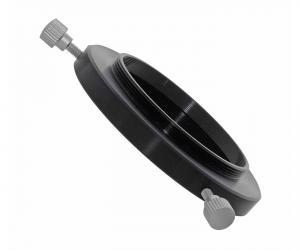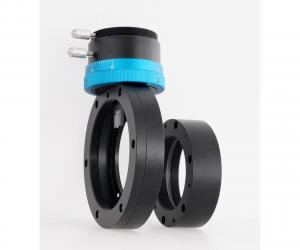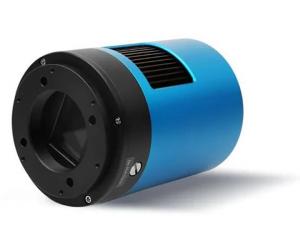- Telescopes
- Overview:
Telescopes - Achromatic Refractor
- Apochromatic Refractor
- Overview:
Apochromatic Refractor - ED Refractor - less color aberration than an achromatic
- SD APO - color free 2-element APO objective
- EDT APO - 3 element ED objective
- High End APO with 3-element APO objective - no color aberation
- Flatfield APO with flat field for Astrophotography
- All Apos and EDs from all manufacturers - large overview
- TS APO and ED from Japan with high quality optics
- Overview:
- Newtonian Telescopes
- Dobsonian Telescopes
- RC Ritchey Chretien Telescopes
- Casssegrain Telescopes
- Reflektor Telescopce with Lens Correcture
- Maksutov Cassegrain Telescopes
- GoTo Telescopes
- Solar Telescopes H-Alpha
- Overview:
- Mounts Tripods Rings Rails Power Supply ...
- Overview:
Mounts Tripods Rings Rails Power Supply ... - Mounts Equatorial with GoTo
- Mounts Equatorial without GoTo
- Mounts Azimutal with GoTo
- Mounts Azimutal without GoTo
- Mounts GoTo - Harmonic Drive
- Travel mounts for astro imaging
- Tripods Piers Polar Wedges
- Mount Control & Electronics
- Dovetail Clamps, Plates and Mount Adapters
- Tube Rings
- Power Supply
- Counterweights Balance Weights
- Mount Accessories - Other
- Overview:
- Telescope Accessories
- Overview:
Telescope Accessories - Eyepieces
- Barlows & Reducer Lenses
- Diagonal Mirrors and Prisms
- Binocular Viewers
- Finder Scopes
- Telescope Collimation and Test
- Cleaning Tools
- Transport and Storage
- Dust protection for Telescopes & Accessories
- Stray Light Protection
- Dewcaps and Heater
- Focusers, Adapters, Motorfocus
- Telescope DIY & Improvement
- Other telescope accessories
- Replacement Parts
- Overview:
- Filters
- Overview:
Filters - Color Filters and Color Filtersets
- Nebular Filters for Visual Observing
- Neutral-Density and Polfilter
- Photo Narrowband Nebular Filters
- Photo Broadband Filters
- Photo Planetary Filters
- Photo R-G-B and IR Cut Filters
- Photo - Filtersets
- Photometric Filters
- Clip Filter for DSLR Cameras
- Filter Wheels and Filterslider
- Solar Filters for white light
- Solarfilter for H-Alpha and Calcium
- Overview:
- Adaptors
- Overview:
Adaptors - Adapter 1,25" and 24,5mm
- Adapter 2"
- Adapter T2 - M42x0.75
- Adapter M48x0,75
- Adapter M54
- Adapter SC
- Adapter M63
- Adapter M68
- Adapter to other Threads
- Adapter Extensions
- Adapter camera bayonet
- Adapter Objective Filterthread
- Adapter Quick Changing , Rotation
- Adapter Eyepiece Projection
- Adapters Tilting
- Overview:
- Astrophotography and Photography
- Overview:
Astrophotography and Photography - Cooled Cameras
- Cameras without Cooling
- Deep-Sky Cameras uncooled
- Set-Offers Camera, Filter, Wheels
- Acessories for Cameras
- Travel mounts for astro imaging
- Imaging Correctors for Telescopes
- Autoguiding Cameras & Sets
- Everything for Guiding
- Focusing aids - Bahtinov mascs
- Flat Field foils and boxes
- Lenses for Cameras
- Piggyback Camera Holder
- Camera Bags, Photocases & more
- Digital Camera and Smartphone Adapter
- Other photo accessories
- Overview:
- Binoculars, Spotting Scopes, Microscopes, Range Finders
- Overview:
Binoculars, Spotting Scopes, Microscopes, Range Finders - Spotting Scopes and Acessories
- Roof Prism Binoculars
- Binoculars with Porro prisms
- Binoculars from 100mm Aperture
- Binoculars with 1,25 inch eyepieces
- TSMX APO Binoculars
- Binoculars for Astronomy
- Binoculars Hiking Bird watching
- Monoculars - Opera Binoculars
- Accessories for Binoculars
- Range Finders
- Microscopy
- Bags for Phototripods & Binoculars
- Overview:
- Phototripods and Binomounts
- Books, Software
- Overview:
Books, Software - Books for Astronomy Beginners
- Star Charts and Planispheres
- Books about our Solar System
- Observing Tips for Amateurs
- Popular Astronomy Literature
- Teaching material
- Astrophotography books
- Telescopes, Observatories, Construction
- Calendars Yearbooks
- Software, Star Charts
- Books for Microscopers
- Books Nature and Animals
- Nature Photography TimeLapse
- Overview:
- Night Vision, Magnifiers, Weather, Domes & more
- Beginner Astronomy and Gift Ideas
- Second Hand & Special Offers
- New products
Manufacturer: QHY Kameras
Product number: QHY268M
EUR3053.00new
EUR 3.053,00
incl. 19 % VAT (DE)
The VAT indicated refers to that applicable in Germany. After logging in, the VAT amount is adjusted to the applicable VAT of the stored delivery country. Therefore, the final price may vary accordingly.
excl. 6.95 € shipping costs (DE)
more details to the shipping costs ...Please log in to calculate shipping costs to your country.
There are no reviews for this product
- Details..
- Technical data..
- In the box..
- Manufacturer infos..
- Safety informations..
QHY268M cooled monochrome CMOS Camera with SONY IMX571 Sensor
The QHY268M/C is a new generation of back-illuminated CMOS cameras with true 16-bit A/D and 3.76 µm pixels. This new Sony sensor is an ideal CMOS sensor exhibiting no amplifier glow. 16-bit A/D gives high-resolution sampling of the whole full well range. Digitizing 0-65535 levels yields a smooth image with a continuous gradation of greyscale levels.1 GB DDR3 image buffer
In order to provide smooth uninterrupted data transfer of the entire 26MP sensor at high speed, the QHY268 has 1GB DDR3 image buffer. The pixel count of the latest generation of CMOS sensors is very high resulting in greater memory requirements for temporary (and permanent) storage. The ALccd-QHY268 has adopted a large-capacity memory of up to 1 GB. Data throughput is doubled. This large image buffer meets the needs of high-speed image acquisition and transmission of the new generation of CMOS, making shooting of multiple frames smoother and less stuttered, further reducing the pressure on the computer CPU.
Reboot the camera by power off and on
The camera is designed to use the +12V to reboot the camera without disconnecting and reconnecting the USB interface. This means that you can reboot the camera simply by shutting down the +12V and then powering it back on. This feature is very handy for remote controlling the camera in an observatory. You can use a remotely controlled power supply to reboot the camera. There is no need to consider how to reconnect the USB in the case of remote control.
Random change thermal noise suppression function
You may find some types of thermal noise can change with time in some back-illuminated CMOS cameras. This thermal noises has the characteristic of the fixed position of typical thermal noise, but the value is not related to the exposure time. Instead, each frame appears to have its own characteristics. The ALccd-QHY268 uses an innovative suppression technology that can significantly reduce the apparent level of such noise.
Extended Fullwell Mode and several readout modes
With a pixel size of 3.76 µm, these sensors already have an impressive full well capacity of 51ke. Nevertheless, QHYCCD has implemented a unique approach to achieve a full well capacity higher than 51ke- through innovative user controllable read mode settings. In Extended Fullwell Mode, the ALccd-QHY268 can achieve an extremely large full-well charge value of nearly 75 ke-. Greater full-well capacity provides greater dynamic range and large variations in magnitude of brightness are less likely to saturate. The QHY268 has three readout modes with different properties.
Native 16 bit A/D conversion
The new Sony sensor has native 16-bit A/D on-chip. The output is real 16-bits with 65536 levels. Compared to 12-bit and 14-bit A/D, a 16-bit A/D yields higher sample resolution and the system gain will be less than 1 e-/ADU with no sample error noise and very low read noise.
BSI
One benefit of the back-illuminated CMOS structure is improved full well capacity. This is particularly useful for sensors with small pixels. In a typical front-illuminated sensor, photons entering the light-sensitive layer of the sensor must first pass through the metal wiring embedded directly above the light-sensitive layer. The wiring reflects some of the photons and reduces the efficiency of the sensor.
In the back-illuminated sensor the light is allowed to enter the photosensitive surface from the reverse side. In this case the sensor?s embedded wiring structure is below the photosensitive layer. As a result, more incoming photons strike the photosensitive layer and more electrons are generated and captured in the pixel well. This ratio of photon to electron production is called quantum efficiency. The higher the quantum efficiency the more efficient the sensor is at converting photons to electrons and hence the more sensitive the sensor is to capturing an image of something dim.
Zero Amplifier Glow!
This camera shows no relevant amplifier glow.
Optimizing USB Traffic to Minimize Horizontal Banding
It is common behavior for a CMOS sensor to contain some horizontal banding. Normally, random horizontal banding can be removed with multiple frame stacking so it does not affect the final image. However, periodic horizontal banding is not removed with stacking so it may appear in the final image. By adjust the USB traffic in Single Frame mode or Live Frame mode, you can adjust the frequency of the CMOS sensor driver and it can optimize the horizontal banding appeared on the image. This optimizing is very effective to remove the periodic banding in some conditions.
TRUE RAW Data
In the DSLR implementation there is a RAW image output, but typically it is not completely RAW. Some evidence of noise reduction and hot pixel removal is still visible on close inspection. This can have a negative effect on the image for astronomy such as the "star eater" effect. However, QHY Cameras offer TRUE RAW IMAGE OUTPUT and produces an image comprised of the original signal only, thereby maintaining the maximum flexibility for post-acquisition astronomical image processing programs and other scientific imaging applications.
Anti-dew Control
Based on almost 20-year cooled camera design experience, The QHY cooled camera has implemented the sealing control solutions. The optic window has built-in dew heater and the chamber is protected from internal humidity condensation. An electric heating board for the chamber window can prevent the formation of dew. The sensor itself is kept dry with QHY´s silicon gel tube socket design for control of humidity within the sensor chamber.
Cooling
In addition to dual stage TE cooling, QHYCCD implements proprietary technology in hardware to control the dark current noise.
| Sensor: | Monochrome CMOS sensor Sony IMX571 |
| Sensor size: | APS-C format (diagonal 28.3 mm) |
| Effective sensor area: | 23.5 mm x 15.7 mm |
| Pixel number: | 26 megapixels |
| Active pixel area: | 6252 x 4176 without overscan area, 6280 x 4210 with overscan area |
| Pixel size: | 3.76 µm x 3.76 µm (square) |
| Shutter: | Rolling shutter |
| Exposure times: | 30 µs - >60 minutes |
| Data depth / A/D conversion: | 16 bit |
| Readout noise: | 3.5 e- @ low gain, 1.1 e- @ high gain (5.3 e- to 7.4 e- in extended full well mode) |
| Full well capacity: | 51 ke- (75 ke- or more in extended full well mode) |
| Supported binning: | 1x1, 2x2 and 3x3 |
| Readout speed (16 bit): | Approx. 6 fps (max. resolution) up to 34 fps (480 pixels in 16bit mode) |
| Readout speed (8 bit): | Approx. 6.8 fps (max. resolution) up to 50 fps (480 pixels in 16bit mode) |
| Amp glow control: | Yes |
| Cooling: | Two-stage TEC cooling |
| Maximum temperature difference: | Approx. 30 °C |
| Sensor chamber: | Separate |
| Interface: | USB 3.0 Super Speed |
| Software compatibility: | Windows 7, 8 and 10, 32 and 64 bit |
| Software supplied: | EZCap |
| Driver supplied: | Windows system driver and ASCOM |
| Further recommended software: | the ASCOM-compatible software packages MSB AstroArt or MaxIm DL and the freeware SharpCap |
| Power supply connection: | 12 V |
| Power consumption: | 27 W maximum |
| Telescope connection: | M54 thread or direct screw connection with CFW3 or OAG-M |
| Filter wheel connection: | 4-pin connection for filter wheel CFW3 |
| Entry window: | Clear glass, multi-coated |
| Heating for sensor chamber window: | Automatic |
| Connection for desiccant cartridge: | Yes |
| Dimensions: | D=90 mm, H=109.33 mm |
| Weight: | 780 g (color camera), 850 g (monochrome camera) |
- Camera head
- Adapter dovetail ring to M54
- Adapter 2" barrel to M54
- USB3.0 cable (1.5 m)
- Storage box
- Software (EZCap) and drivers (Windows system drivers and ASCOM) on CD
- Adapter dovetail ring to M54
- Adapter 2" barrel to M54
- USB3.0 cable (1.5 m)
- Storage box
- Software (EZCap) and drivers (Windows system drivers and ASCOM) on CD
| Manufacturer / Importeur: | Astrolumina Michael Breite |
| Street: | Alfred-Wirth-Straße 12 |
| ZIP / City: | 41812 Erkelenz |
| Country: | Deutschland |
| Telefon number: | +49 2431 9730725 |
| Email: | info@astrolumina.de |
| Website: | www.astrolumina.de |
Safety informations: PDF Download
Recommended accessories
Adaptors
Photo Acessories
TS-Optics filter changer with M54x0.75 thread for full frame cameras
EUR 79,00RRP EUR 99,00you save 20.2% (EUR 20,00)
Power Supply
Similar Products
TS-Optics ToupTek Mono Astro Camera 2600MP G2 Sony IMX571 Sensor D=28.3 mm
EUR 1.999,00RRP EUR 2.480,00you save 19.4% (EUR 481,00)
Reviews


































